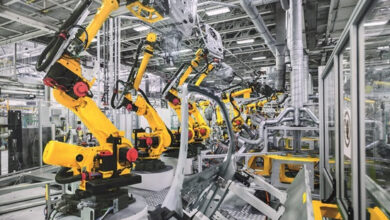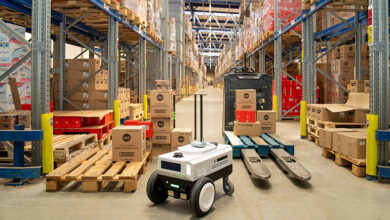Advancing obstetric and gynecologic surgery through robotic innovation

Advancing obstetric and gynecologic surgery through robotic innovation| Image Credit: © Summit Art Creations – © Summit Art Creations – stock.adobe.com.
Robotic surgery can be used to advance techniques in obstetric and gynecologic surgery, according to a recent study published in Cureus.
Takeaways
- Robotic surgery in obstetrics and gynecology enhances precision and reduces complications, leading to improved patient outcomes compared to traditional methods.
- Gynecologic procedures such as myomectomies and hysterectomies, as well as obstetrical procedures such as cesarean sections, benefit from robotic-assisted techniques because of smaller incisions, reduced blood loss, and faster recovery times.
- Despite the advantages, challenges such as high costs, training requirements for surgeons, and limited accessibility still hinder widespread adoption of robotic surgery in this field.
- Recent innovations in robotic surgery include automation of surgical tools for better efficacy and precision, focusing on critical aspects of procedures while enhancing patient safety.
- Future advancements in robotic surgery may include miniaturization, artificial intelligence integration, and telepresence, presenting both opportunities and ethical considerations for improving patient-centered care in obstetrics and gynecology.
Robotic surgery is defined by the use of advanced robot systems during surgery. These include robotic arms with miniature equipment and an advanced camera for improved precision and dexterity. Minimally invasive procedures can be performed with improved accuracy through these tools.
Gynecologic procedures that can benefit from robotic surgery include myomectomies, hysterectomies, and ovarian cystectomies. Obstetrical procedures that can benefit include cesarean sections and fetal interventions. Robotic surgery in obstetrics and gynecology can decrease trauma, blood loss, and hospital stays, as well as improve recovery times.
Investigators conducted a review to evaluate the evolution of robotic surgery in obstetrics and gynecology and inform providers and policy makers about the evolving landscape. Implementation of robot surgery in the field began with the da Vinci Surgical System, which allowed improved visualization, dexterity, and patient outcomes.
Changes in surgical management have been observed following the advancement of robotic surgery technology. Innovations ranging from Hippocrates’ utilization of tin catheters to modern robotic systems have significantly impacted the transition to robotic-assisted surgery.
A major impact has been observed from robotic surgery on gynecology, with studies indicating increased safety and similar perioperative outcomes to traditional methods during robot-assisted gynecologic surgery. Compared to open surgery, post-surgical hospital stay lengths are significantly reduced by robotic surgery.
In hysterectomy, robotic surgery allows for smaller incisions, reduced blood loss, and faster recovery. The risks of complications are also reduced through robotic-assisted hysterectomy. Similarly, robotic-assisted myomectomy supports meticulous tissue dissection and suturing, enhancing surgical success rates and patient satisfaction.
During tubal renastomosis, robotic tools can be used for careful manipulation of delicate tubal structures. The improved precision and control granted by robotic surgery allow for a less invasive procedure, which reduces postoperative pain and recovery time.
The robotic platform also allows for improved dexterity and visualization among surgeons navigating complex pelvic anatomy during sacrocolpopexy. Finally, while robotic assisted laparoscopic sleeve gastrectomy is not directly linked to obstetrics and gynecology, it is often utilized concurrently with gynecologic procedures and is more effective when using robotic tools.
Visualization is a significant improvement offered by robotic surgery. Surgeons can confidently navigate complex pathways with the assistance of robotic tools, leading to greater precision and accuracy. Alongside improving results, this reduces the risk of complications. The use of steady robotic arms also eliminates the impact of surgeon tremors.
Currently, there are still multiple limits in robotic surgery for obstetric and gynecologic care. The cost of robotic surgery is significantly higher than traditional methods, creating a barrier for many patients. This cost is only heightened by the need for maintenance and calibration of robotic equipment.
Surgeons also must receive extensive training to effectively use the robotic tools, which can increase initial operative time and costs. Additionally, restricted availability has caused patient disparities in access to advanced surgical care.
Another significant advancement in robotic surgery is the implementation of automation in precise surgical tools for improved efficacy and precision. This innovation allows surgeons to focus on critical aspects of the procedure, while the systems facilitate tissue identification, precise instrument placement, and meticulous surgical technique.
Areas of improvement that have been given attention in recent innovation include adjustable stiffness, detectability, and bendability. These areas are given focus to reduce challenges associated with traditional methods, leading to improved patient outcomes and quality of care.
Potential future advancements in robotic surgery include miniaturization and micro-robotics, artificial intelligence, and telepresence. As these advancements bring ethical and societal considerations, the American Medical Association Code of Medical Ethics has provided guidelines to ensure safe, effective, timely, patient-centered, and equitable care.
Reference
Yadav P, Chaudhari K, Dave A, Sindhu A. Exploring the evolution of robotic surgery in obstetrics and gynecology: Past, present, and future perspectives. Cureus. 2024;16(3):e57155. doi:10.7759/cureus.57155



